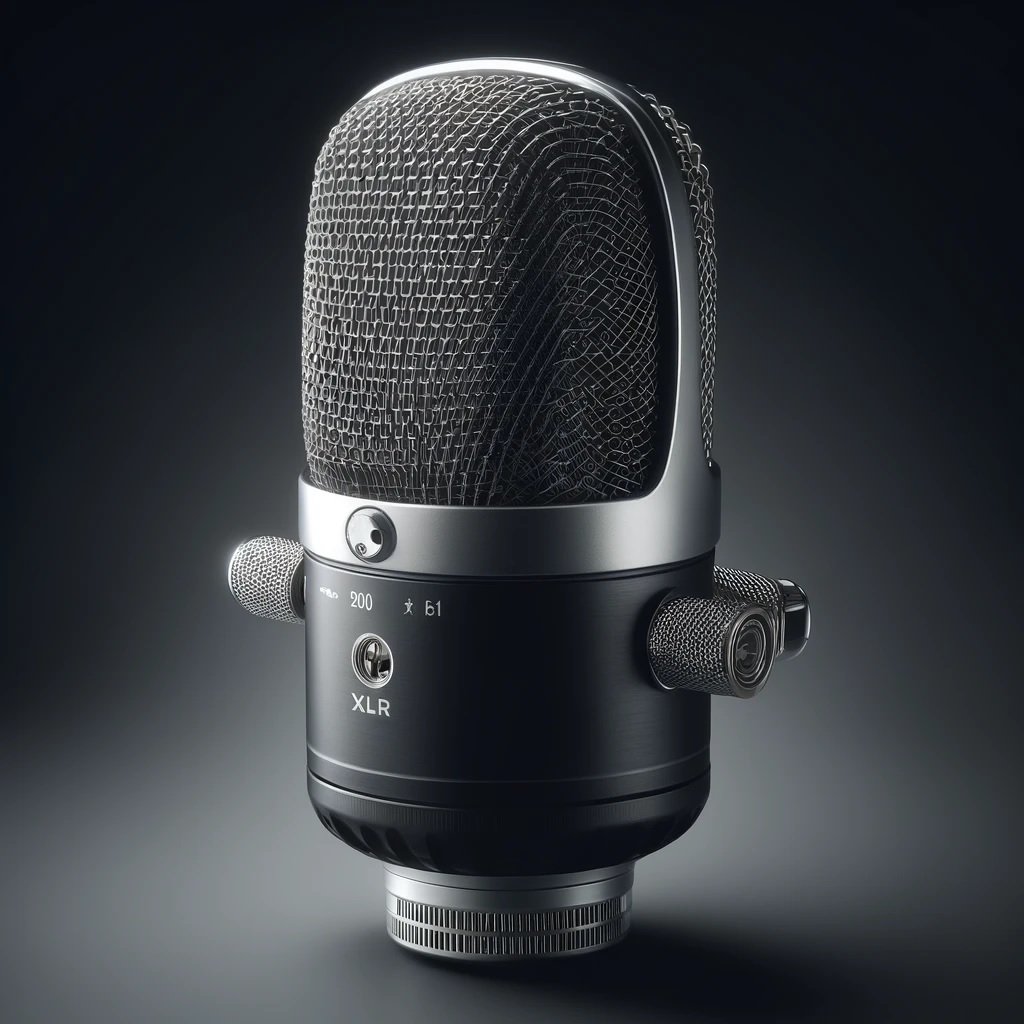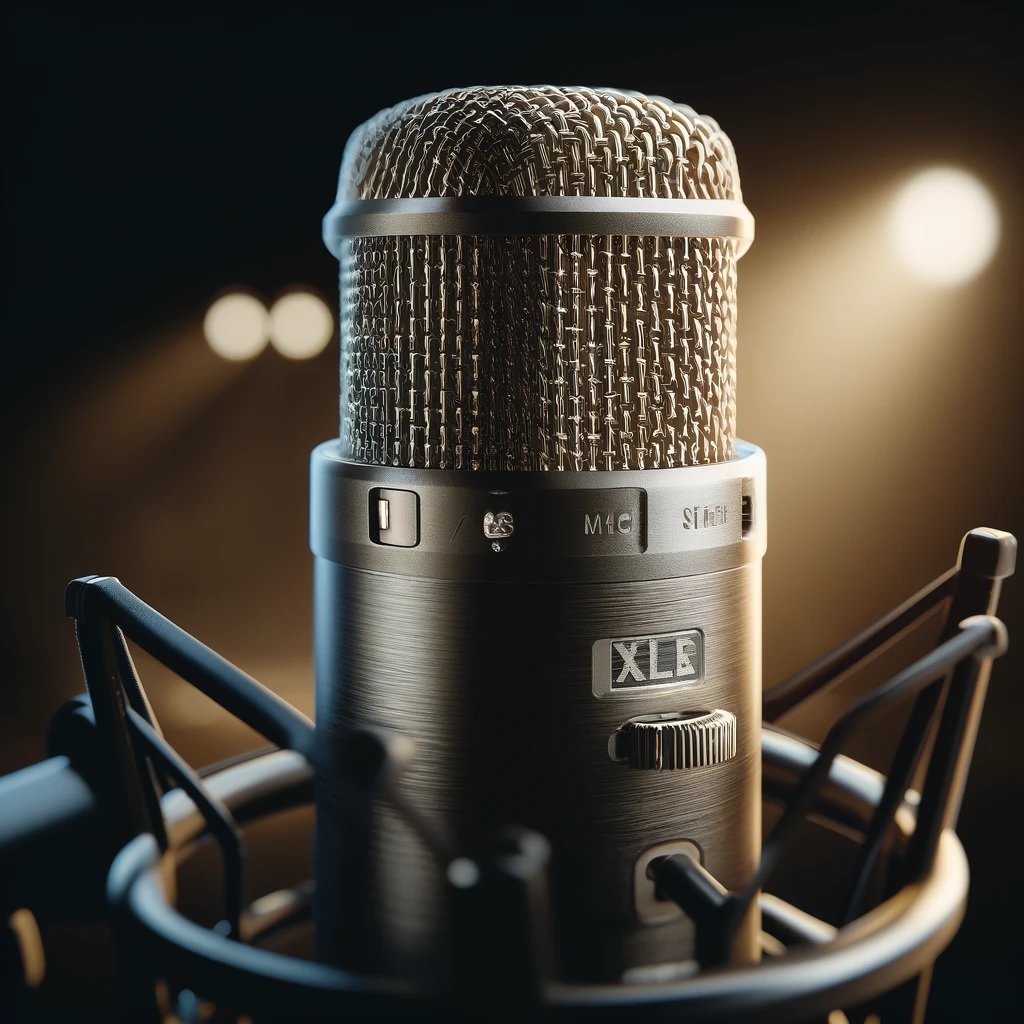Unveiling the Power of XLR Microphone: A Comprehensive Guide
Introduction
In the world of audio recording and expert sound production, XLR microphones stand as stalwarts of excellence. With their unprecedented performance and reliability, XLR microphones have become necessary tools for musicians, broadcasters, podcasters, and audio engineers alike.
In this complete manual, we delve into the intricacies of this microphone, exploring their functions, user studies, professionals and cons, FAQs, and comparisons with leading competition.

Details
Understanding XLR Technology
At the middle of every XLR microphone lies a strong and standardized connector called the XLR connector. This three-pin connector ensures secure and balanced transmission of audio indicators, minimizing interference and turning in pristine sound nice.
Unlike different forms of connectors, together with the zone-inch jack or USB, the XLR connector offers a extra dependable and solid connection, making it the favored choice for expert audio packages.
Types
These microphones are available diverse sorts to cater to different recording needs. Dynamic microphones, characterised through their rugged production and excessive sturdiness, are often used in stay performances and recording environments with high sound strain levels.
Condenser microphones, alternatively, provide extra sensitivity and clarity, making them ideal for studio recordings, vocals, and acoustic contraptions. Ribbon microphones, with their easy and natural sound replica, are preferred for taking pictures delicate nuances in each stay and studio settings.
Key Features
Interchangeable Capsules
One of the key functions of this microphone is their capability to deal with interchangeable tablets. These drugs, which comprise the microphone’s diaphragm and pickup pattern, can be swapped out to tailor the microphone’s performance to unique recording eventualities.
Whether you want a cardioid pattern for solo vocals, an omnidirectional pattern for ambient recording, or a parent-8 pattern for stereo imaging, interchangeable pills provide versatility and versatility unmatched by means of other microphone kinds.
Low Noise Performance
XLR technology is renowned for its low noise performance, ensuring that recordings continue to be easy and free from undesirable artifacts. By utilising balanced audio transmission and protective techniques, XLR microphones successfully reject electromagnetic interference and cable noise, ensuing in pristine sound best even in difficult acoustic environments. Whether you’re recording in a noisy studio or a bustling stay venue, XLR microphones supply steady and reliable performance.

Features Table
| Feature | Description |
|---|---|
| Superior Sound Quality | These microphones are renowned for their exceptional audio fidelity, capturing every nuance with precision. |
| Durable Construction | Built to withstand rigorous use, XLR microphones boast robust construction for long-lasting reliability. |
| Versatility | With interchangeable capsules and accessories, XLR microphones adapt to various recording environments. |
| Low Noise Performance | XLR technology minimizes unwanted noise, ensuring clean recordings even in challenging acoustic settings. |
User Experience
The person experience of this microphone is marked by means of reliability, durability, and steady performance. Professionals and fans alike admire their robust construction, advanced sound quality, and compatibility with a extensive range of audio equipment. Whether you’re a pro audio engineer or a amateur podcaster, the usage of these, instills self belief and peace of mind, understanding that your recordings will usually meet the best requirements of best.
Pros and Cons
Pros
- Exceptional sound quality
- Versatility for various applications
- Robust and durable construction
- Low noise performance
- Compatibility with a wide range of audio equipment
- Interchangeable capsules for customization
- Balanced audio transmission for interference-free recordings
- Suitable for both studio and live environments
- Wide availability of accessories and replacement parts
- Established industry standard for reliability and performance
Cons
- Requires additional equipment such as audio interfaces or mixers
- Higher initial investment compared to USB microphones
- Bulkier and less portable than some alternatives
- May require phantom power for condenser microphones
- Limited options for budget-conscious buyers
- Not as plug-and-play as USB microphones
- Requires basic knowledge of audio equipment for setup and operation
- More susceptible to cable issues and connectivity problems
- Limited options for built-in features compared to some USB microphones
- May require specialized cables and connectors for compatibility with certain devices.
Top Competitors
1-Audio-Technica AT2020
2-Shure SM58
3-Rode NT1-A
4-AKG C214
5-Sennheiser MD421
Comparison of Competitors
| Feature | Neumann U87 | Electro-Voice RE20 | Aston Origin | Blue Microphones Bluebird | Lewitt LCT 540 |
|---|---|---|---|---|---|
| Type | Condenser | Dynamic | Condenser | Condenser | Condenser |
| Frequency Response | 20Hz – 20kHz | 45Hz – 18kHz | 20Hz – 20kHz | 20Hz – 20kHz | 20Hz – 20kHz |
| Polar Pattern | Cardioid/Omni/Bi-directional | Cardioid | Cardioid | Cardioid | Cardioid |
| Sensitivity | 28 mV/Pa | 1.5 mV/Pa (1kHz) | 23.7 mV/Pa | 35 mV/Pa (1kHz) | 28 mV/Pa |
| Impedance | 200 ohms | 150 ohms | 100 ohms | 50 ohms | 150 ohms |
Conclusion
In end, XLR microphones constitute the top of audio recording era, presenting unheard of sound fine, reliability, and flexibility. Whether you’re a musician, podcaster, broadcaster, or audio engineer, making an investment in an XLR microphone is a selection you may not remorse.
With a huge range of options available and a wealth of features to suit every need, XLR microphones keep to set the standard for excellence inside the enterprise.
Also read About: Neumann Microphone
Also read About: Blue Microphone
Also read About: Wireless Microphone
Also read About: PInk Microphone
Also read About: Gold Microphone
FAQs
-
Can I use an XLR microphone with my computer?
Yes, you may join these microphone on your computer the usage of an audio interface or a USB mixer.
-
What is phantom power, and do I need it for my XLR microphone?
Phantom strength is a way of sending electrical strength to condenser microphones through the XLR cable. If your microphone requires phantom strength, you’ll want a like minded audio interface or mixer.
-
Are XLR microphones better than USB microphones?
XLR microphones are desired for expert audio manufacturing due to their superior sound first-rate, reliability, and versatility.
-
Can I use an XLR microphone for podcasting?
Yes, many podcasters select these microphones for their outstanding sound satisfactory and durability.
-
What is the difference between dynamic and condenser XLR microphones?
Dynamic microphones are rugged and suitable for live performances, whilst condenser microphones provide extra sensitivity and clarity, perfect for studio recordings.
-
How do I choose the right XLR microphone for my needs?
Consider elements along with your recording surroundings, meant use, and price range when deciding on an XLR microphone.
-
Can I use XLR microphones for live performances?
Yes, many of these microphones are designed especially for stay sound reinforcement and perform exceptionally properly in live settings.
-
Do XLR microphones require special cables?
Yes, XLR microphones use XLR cables for connectivity, which function 3-pin connectors for balanced audio transmission.
-
Are XLR microphones compatible with mobile devices?
XLR microphones may be used with cell devices the use of adapters or interfaces designed for cell recording.
-
How long do XLR microphones typically last?
With proper care and preservation, XLR microphones can final for decades, making them a profitable funding for professional audio manufacturing.
-
Can I use XLR microphones with DSLR cameras for video recording?
Yes, many DSLR cameras feature XLR inputs or support XLR adapters for connecting external microphones, consisting of XLR microphones.
-
What is the difference between a dynamic microphone and a condenser microphone?
Dynamic microphones are usually more rugged and appropriate for high sound strain degrees, while condenser microphones provide more sensitivity and clarity, making them perfect for capturing nuanced performances.
-
Are XLR microphones suitable for field recording and outdoor environments?
Yes, many XLR microphones are designed with rugged production and weather-resistant functions, making them appropriate for discipline recording and outside use.
-
How do I clean and maintain an XLR microphone?
To preserve top of the line overall performance, frequently smooth the microphone’s outdoors with a soft, dry fabric and keep away from exposing it to excessive moisture or dust. For inner cleaning, consult the manufacturer’s recommendations or are seeking for professional servicing.
-
Can I use XLR microphones with mobile recording apps on smartphones or tablets?
Yes, with the precise adapters or interfaces, XLR microphones may be used with cellular recording apps on smartphones or pills, permitting exceptional audio capture at the cross.

